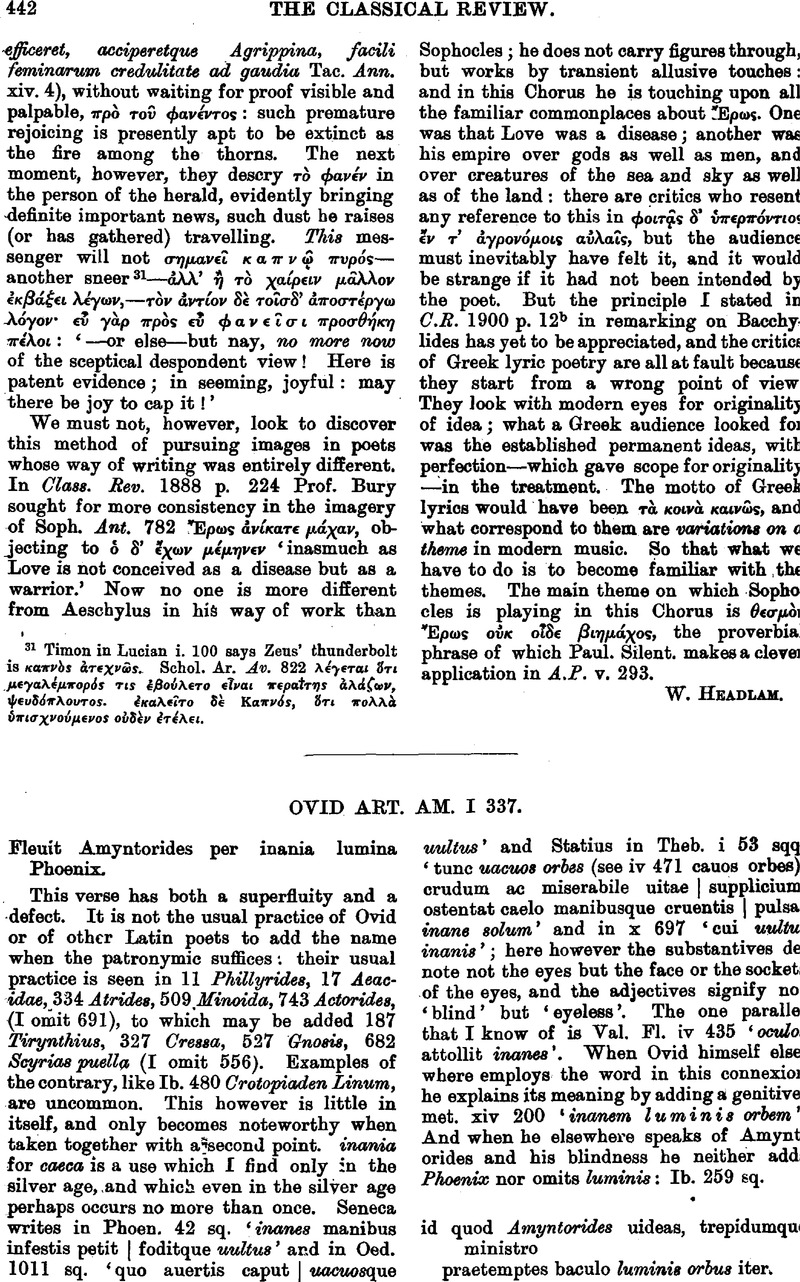No CrossRef data available.
Article contents
Abstract

- Type
- Original Contributions
- Information
- Copyright
- Copyright © The Classical Association 1902
References
page 443 note 1 It is true that this correction, though accepted by Haupt and Vahlen, is rejected by many editors and even by Lucian Mueller. Most scholars have their own notion of the galliambic metre (which they pronounce like The love that I hae chosen, I'll therewith he content or Die alten bösen Lieder, die Träume schlimm und arg) and do not enquire what notion the Romans had of it.
page 445 note 1 coccis Lachmann, cogis MSS ‘sensu aut inepto ant nullo,’ retained by a few editors who know the meaning neither of cogere nor of the 2nd pers. indic. Imagine Maecenas (or, if yon prefer it, the gentle reader, who has just been addressed in the plural with quaeritis) insisting that Cynthia should parade in Coan stuffs, cogis would be a greater change than coccis, and the verb would remain unsuitable. It possible however that cogis is merely a dittography of Cois and has ousted cerno.
page 445 note 2 For example, in this Review vol. xi p. 427 I proposed cum uellent uento iam dare uela rates at her. xvi 122: he says on p. 251 that I proposed cum uento nostrae iam dare uela rates, and enquires ‘wie soil denn dann der Vers konstruiert werden?’


